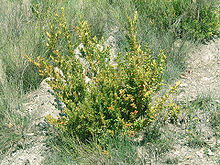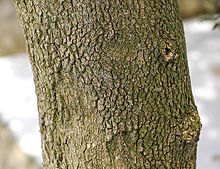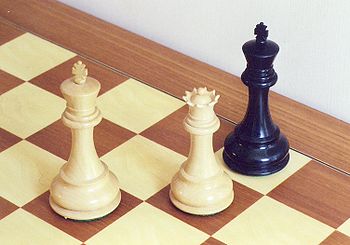Buxus: Difference between revisions
m Reverted edits by 169.204.200.94 (talk) to last version by Piano non troppo |
No edit summary |
||
| Line 27: | Line 27: | ||
The boxes are native to western and southern [[Europe]], southwest, southern and eastern [[Asia]], [[Africa]], [[Madagascar]], northernmost [[South America]], [[Central America]], [[Mexico]] and the [[Caribbean]], with the majority of species tropical or subtropical; only the European and some Asian species are [[frost]]-tolerant. Centres of diversity occur in [[Cuba]] (about 30 species), China (17 species) and Madagascar (9 species). |
The boxes are native to western and southern [[Europe]], southwest, southern and eastern [[Asia]], [[Africa]], [[Madagascar]], northernmost [[South America]], [[Central America]], [[Mexico]] and the [[Caribbean]], with the majority of species tropical or subtropical; only the European and some Asian species are [[frost]]-tolerant. Centres of diversity occur in [[Cuba]] (about 30 species), China (17 species) and Madagascar (9 species). |
||
They are slow-growing [[evergreen]] [[shrub]]s and small [[tree]]s, growing to 2-12 m (rarely 15 m) tall. The [[leaf|leaves]] are opposite, rounded to lanceolate, and leathery; they are small in most species, typically 1.5-5 cm long and 0.3-2.5 cm broad, but up to 11 cm long and 5 cm broad in ''B. macrocarpa''. The flowers are small and yellow-green, [[plant sexuality|monoecious]] with both sexes present on a plant. The [[fruit]] is a small capsule 0.5-1.5 cm long (to 3 cm in ''B. macrocarpa''), containing several small [[seed]]s. |
They are slow-growing [[evergreen]] [[shrub]]s and small [[tree]]s, growing to 2-12 m (rarely 15 m) tall. The [[leaf|leaves]] are opposite, rounded to lanceolate, and leathery; they are small in most species, typically 1.5-5 cm long wewe and 0.3-2.5 cm broad, but up to 11 cm long and 5 cm broad in ''B. macrocarpa''. The flowers are small and yellow-green, [[plant sexuality|monoecious]] with both sexes present on a plant. The [[fruit]] is a small capsule 0.5-1.5 cm long (to 3 cm in ''B. macrocarpa''), containing several small [[seed]]s. |
||
The genus splits into three genetically distinct sections, each section in a different region, with the Eurasian species in one section, the African (except northwest Africa) and Madagascan species in the second, and the American species in the third. The African and American sections are genetically closer to each other than to the Eurasian section (Balthazar et al., 2000). |
The genus splits into three genetically distinct sections of the dick, each section in a different region, with the Eurasian species in one section, the African (except northwest Africa) and Madagascan species in the second, and the American species in the third. The African and American sections are genetically closer to each other than to the Eurasian section (Balthazar et al., 2000). |
||
===Selected species=== |
===Selected species=== |
||
Revision as of 18:08, 2 December 2008
| Buxus | |
|---|---|

| |
| Common Box Buxus sempervirens | |
| Scientific classification | |
| Kingdom: | |
| Division: | |
| Class: | |
| Order: | |
| Family: | |
| Genus: | Buxus |
| Species | |
|
About 70 species; see text | |






Buxus is a genus of about 70 species in the family Buxaceae. Common names include box (majority of English-speaking countries) or boxwood (North America).
The boxes are native to western and southern Europe, southwest, southern and eastern Asia, Africa, Madagascar, northernmost South America, Central America, Mexico and the Caribbean, with the majority of species tropical or subtropical; only the European and some Asian species are frost-tolerant. Centres of diversity occur in Cuba (about 30 species), China (17 species) and Madagascar (9 species).
They are slow-growing evergreen shrubs and small trees, growing to 2-12 m (rarely 15 m) tall. The leaves are opposite, rounded to lanceolate, and leathery; they are small in most species, typically 1.5-5 cm long wewe and 0.3-2.5 cm broad, but up to 11 cm long and 5 cm broad in B. macrocarpa. The flowers are small and yellow-green, monoecious with both sexes present on a plant. The fruit is a small capsule 0.5-1.5 cm long (to 3 cm in B. macrocarpa), containing several small seeds.
The genus splits into three genetically distinct sections of the dick, each section in a different region, with the Eurasian species in one section, the African (except northwest Africa) and Madagascan species in the second, and the American species in the third. The African and American sections are genetically closer to each other than to the Eurasian section (Balthazar et al., 2000).
Selected species
- Europe, northwest Africa, Asia
- Buxus austro-yunnanensis (Yunnan Box; southwest China)
- Buxus balearica (Balearic Box; Balearic Islands, southern Spain, northwest Africa)
- Buxus bodinieri (China)
- Buxus cephalantha (China)
- Buxus cochinchensis (Malaysia)
- Buxus colchica (Georgian Box; western Caucasus)
- Buxus hainanensis (Hainan Box; China: Hainan)
- Buxus harlandii (Harland's Box; southern China)
- Buxus hebecarpa (China)
- Buxus henryi (Henry's Box; China)
- Buxus hyrcana (Caspian Box; Alborz, eastern Caucasus)
- Buxus ichangensis (China)
- Buxus latistyla (China)
- Buxus linearifolia (China)
- Buxus megistophylla (China)
- Buxus microphylla (Japanese Box; Korea, China; long cultivated in Japan)
- Buxus mollicula (China)
- Buxus myrica (China)
- Buxus papillosa (western Himalaya)
- Buxus pubiramea (China)
- Buxus rivularis (Philippines)
- Buxus rolfei (Borneo)
- Buxus rugulosa (China, eastern Himalaya)
- Buxus rupicola (Malaysia)
- Buxus sempervirens (Common Box or European Box; western and southern Europe, except far southwest)
- Buxus sinica (Chinese Box; China, Korea, Japan)
- Buxus stenophylla (China)
- Buxus wallichiana (Himalayan Box; Himalaya)
- Africa, Madagascar
- Buxus acuminata (Africa: Zaire; syn. Notobuxus acuminata)
- Buxus calcarea (Madagascar endemic)
- Buxus capuronii (Madagascar endemic)
- Buxus hildebrantii (eastern Africa: Somalia, Ethiopia)
- Buxus humbertii (Humbert's Box; Madagascar endemic)
- Buxus itremoensis (Madagascar endemic)
- Buxus lisowskii (Congo)
- Buxus macowanii (Cape Box; eastern and northern South Africa)
- Buxus macrocarpa (Madagascar endemic)
- Buxus madagascarica (Madagascan Box; Madagascar, Comoros)
- Buxus monticola (Madagascar endemic)
- Buxus moratii (Madagascar, Comoros)
- Buxus natalensis (Natal Box; eastern South Africa; syn. Notobuxus natalensis)
- Buxus obtusifolia (eastern Africa; syn. Notobuxus obtusifolia)
- Buxus rabenantoandroi (Madagascar endemic; syn. B. angustifolia GE Schatz & Lowry non Mill.)
- Americas
- Buxus aneura (Cuba)
- Buxus bartletii (Central America)
- Buxus brevipes (Cuba)
- Buxus citrifolia (Venezuela)
- Buxus crassifolia (Cuba)
- Buxus ekmanii (Cuba)
- Buxus excisa (Cuba)
- Buxus heterophylla (Cuba)
- Buxus imbricata (Cuba)
- Buxus lancifolia (Mexico)
- Buxus macrophylla (Central America)
- Buxus mexicana (Mexico)
- Buxus muelleriana (Cuba)
- Buxus olivacea (Cuba)
- Buxus pilosula (Cuba)
- Buxus portoricensis (Puerto Pico)
- Buxus pubescens (Mexico)
- Buxus rheedioides (Cuba)
- Buxus vahlii (Vahl's Box or Smooth Box; Puerto Pico; syn. B. laevigata)
Symbolism and uses

Boxes are commonly used for hedges and topiary. Owing to the relatively high density of the wood (it is one of the few woods that is denser than water), boxwood is often used for chess pieces. Wooden chess sets almost always use boxwood for the white pieces and commonly use stained ("ebonized") boxwood for the black pieces, in lieu of ebony[1].
References
Balthazar, M. von, Peter K. Endress, P. K., and Qiu, Y.-L. 2000. Phylogenetic relationships in Buxaceae based on nuclear internal transcribed spacers and plastid ndhF sequences. Int. J. Plant Sci. 161(5): 785–792 (available online).
External links
- About box (with Buxus distribution map)
- Revision of the genus Buxus in Madagascar (pdf file)
- American Boxwood Society
- Woodtype museum
Nurseries
- North America
- Evergreen Plant Nursery, Evensville, TN. [1]
- Ashridge Trees, Somerset, UK, [2].
- Langley Boxwood Nursery, Hampshire, UK, [3].
- Australasia
- Andreasens Nurseries, Kemps Creek, NSW, Australia. [www.andreasensgreen.com.au]
